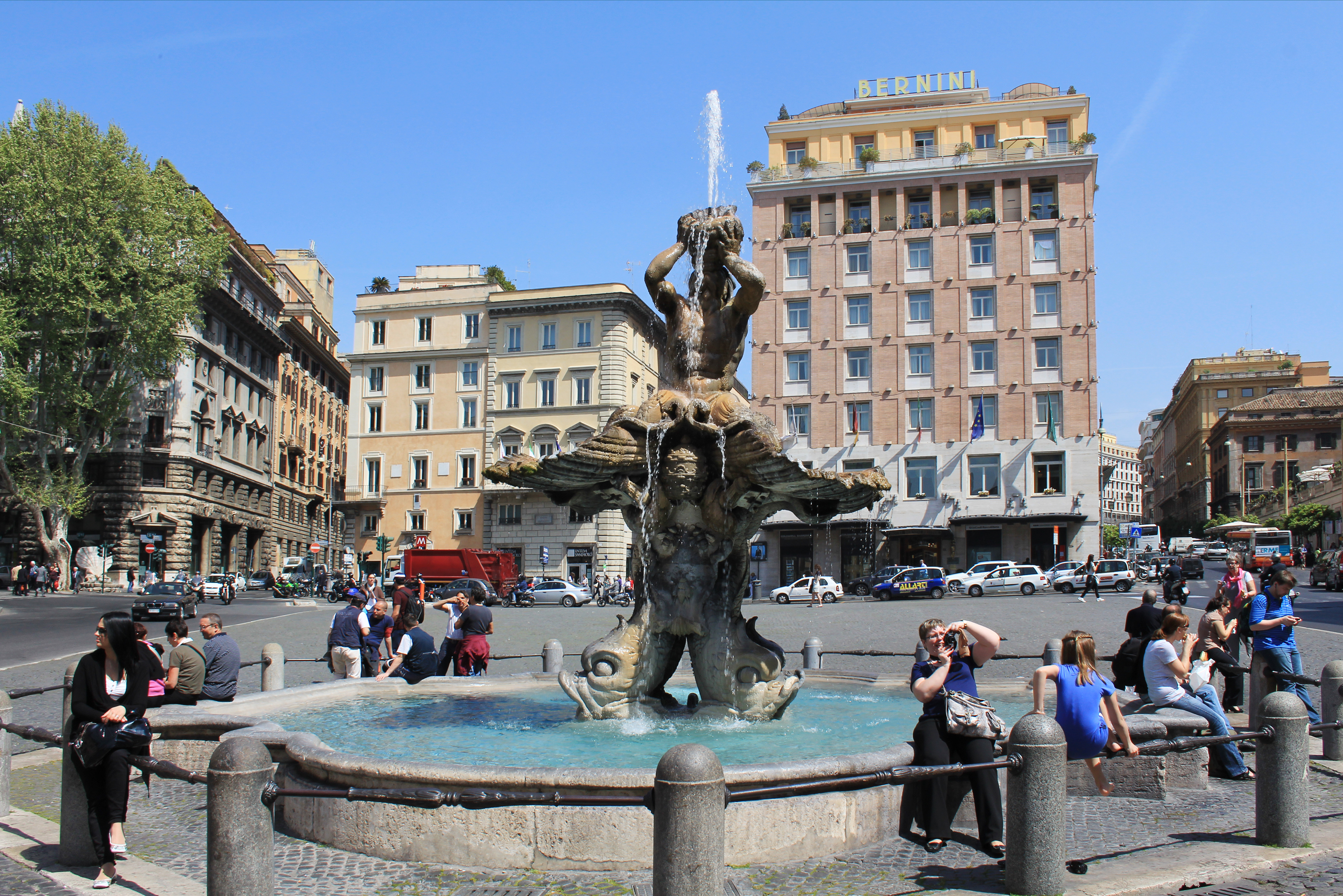Piazza Barberini on:
[Wikipedia]
[Google]
[Amazon]
Piazza Barberini is a large piazza in the ''centro storico'' or city center of Rome, Italy and situated on the
 Today, the piazza is large crossroad for Rome's traffic and, since 1980, has accommodated a station on Line A of the
Today, the piazza is large crossroad for Rome's traffic and, since 1980, has accommodated a station on Line A of the 
 .
.
Piazza Barberini with a lot of pictures
{{Authority control
Quirinal Hill
The Quirinal Hill (; la, Collis Quirinalis; it, Quirinale ) is one of the Seven Hills of Rome, at the north-east of the city center. It is the location of the official residence of the Italian head of state, who resides in the Quirinal Palac ...
. It was created in the 16th century but many of the surrounding buildings have subsequently been rebuilt.
The current appellation was given in 1625 when it was named after the Palazzo Barberini, the substantial Baroque
The Baroque (, ; ) is a style of architecture, music, dance, painting, sculpture, poetry, and other arts that flourished in Europe from the early 17th century until the 1750s. In the territories of the Spanish and Portuguese empires including th ...
palace built in an elevated position on the south side of the piazza for the Barberini
The House of Barberini are a family of the Italian nobility that rose to prominence in 17th century Rome. Their influence peaked with the election of Cardinal Maffeo Barberini to the papal throne in 1623, as Pope Urban VIII. Their urban palace ...
. Originally, there was a large entrance gateway to the palace designed by the Baroque painter and architect Pietro da Cortona
Pietro da Cortona (; 1 November 1596 or 159716 May 1669) was an Italian Baroque painter and architect. Along with his contemporaries and rivals Gian Lorenzo Bernini and Francesco Borromini, he was one of the key figures in the emergence of Roman ...
on the south east corner of the piazza but this was demolished to make way for the construction of a new road in the 19th century. However, its appearance is known from engravings and early photographs of the piazza.
At the centre of the piazza is the ''Fontana del Tritone'' or Triton Fountain
Fontana del Tritone (''Triton Fountain'') is a seventeenth-century fountain in Rome, by the Baroque sculptor Gian Lorenzo Bernini. Commissioned by his patron, Pope Urban VIII, the fountain is located in the Piazza Barberini, near the entrance t ...
(1642–3) sculpted by Bernini
Gian Lorenzo (or Gianlorenzo) Bernini (, , ; Italian Giovanni Lorenzo; 7 December 159828 November 1680) was an Italian sculptor and architect. While a major figure in the world of architecture, he was more prominently the leading sculptor of his ...
. Another fountain, the Fontana delle Api
Fontana delle Api (''Fountain of the Bees'') is a fountain located in the Piazza Barberini in Rome where the Via Veneto enters the piazza. It was sculpted by Gian Lorenzo Bernini and completed in April 1644.
Description
''Fontana delle Api'' con ...
(1644), also by Bernini is in the nearby Via Vittorio Veneto but it has been reconstructed somewhat arbitrarily following its removal from its previous position on the corner of a palace where the Piazza Barberini meets the Via Sistina.Blunt, Anthony. ''Guide to Baroque Rome'' , Granada, 1982, p. 230
Until the 18th century, unknown human corpses were displayed here for public identification. Between 1632 and 1822 an antique obelisk stood here; it was transferred to Villa Medici.
Modern geography
 Today, the piazza is large crossroad for Rome's traffic and, since 1980, has accommodated a station on Line A of the
Today, the piazza is large crossroad for Rome's traffic and, since 1980, has accommodated a station on Line A of the Rome Metro
The Rome Metro ( it, Metropolitana di Roma) is a rapid transit system that operates in Rome, Italy. It started operation in 1955, making it the oldest in the country.
The Metro comprises three lines – A (orange), B (blue) and C (green) � ...
, called '' Barberini – Fontana di Trevi''. References
External links
Piazza Barberini with a lot of pictures
{{Authority control
Barberini
The House of Barberini are a family of the Italian nobility that rose to prominence in 17th century Rome. Their influence peaked with the election of Cardinal Maffeo Barberini to the papal throne in 1623, as Pope Urban VIII. Their urban palace ...
Barberini family
Rome R. II Trevi
Rome R. III Colonna